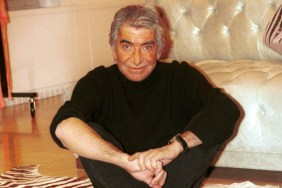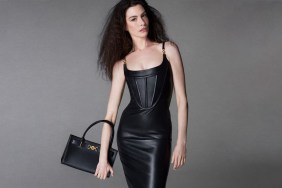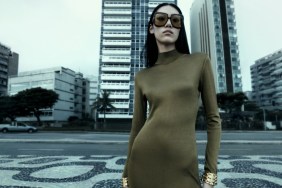
Famous for being fashion’s most blatant voyeur, he created images that weren’t just sexual. They were a comment, and an expression of candor without pretense.
He himself saw his pictures as ‘contrived’, but within the rigid control that he exercised over his models and portrait sitters there is a freedom and a naturalness. It’s believable, even when farfetched.
His work thrusts you into a scene that has implications, that alludes to a wider story outside of the frame. What I have always loved about Newton’s work is that it suggested a before and after – you were just seeing one moent in a longer story – and wouldn’t you love to know what happened?
Helmut was born in Berlin, and grew up there during the Roaring 20’s. At the age of 16, he began working with fashion photographer Yva as an apprentice. He fled Nazi Germany in 1938, and after living in Singapore for 2 years, moved to Australia where he joined the army and became a citizen.
He met June Brucker (an actress at the time who later became photographer under the name ‘Alice Springs’) when she modeled for him, and while she was never paid for modeling, she did become his wife. Newton was a working photographer from 1938 to 1970, and then came the event that changed his vision: he had a nearly fatal heart attack in 1971.



In the documentary Frames From The Edge (1988), we see Helmut working in studio, blithely using a model in bondage gear to sell hardware. And that’s his secret – he got people to accept what was outlandish and marginalized, because in the end, sex sells.
During the course of the film you see him working with models on location with just a camera and one assistant, and they trust him and allow him to direct them to take off their tops in gardens and press their genitals against car fenders.
I think it’s the element of trust, of people trusting him and his judgement that makes his photographs so special. He’s asking his subjects to reveal themselves physically, but he admits that he is only interested in the surface of the sitter or model.
It also creates a special image space – you, the viewer, are free to project onto what is happening, it lets your imagination into the frame. The viewer completes the photographic process completely. Newton himself admitted that he hated to take photos that were not going to be seen. He acted out the inner voyeur of his audience,and the exhibitionist in his sitter – and took the blame for everyone else’s perversity.

The sum of Helmut Newton’s entire career, the first copy of the book was signed by 100 of the celebrities that he had photographed. That copy sold for $430,000 at auction. He died 4 years later in a car crash – an end as dramatic as the life, the work, and the man.








